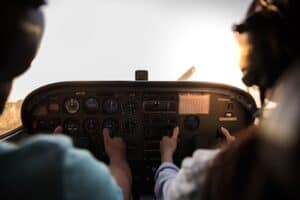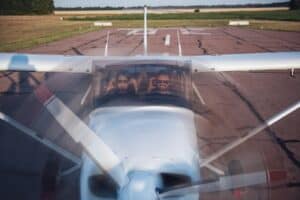Ensuring the safety of aircraft is paramount for both manufacturers and operators. With advancements in technology and rigorous regulatory standards, the aviation industry continually seeks to enhance the safety of aircraft.
In this post, we will explore various strategies and best practices that can significantly improve the safety of your aircraft.
1. Regular Maintenance and Inspections
One of the most crucial steps in maintaining aircraft safety is adhering to a stringent maintenance schedule. Regular inspections, as mandated by aviation authorities, help identify potential issues before they become serious problems.
Aircraft maintenance includes checking the structural integrity, examining the engines, testing avionics systems, and ensuring that all components meet safety standards.
Best Practice: Implement a comprehensive maintenance management system that tracks inspection schedules, maintenance history, and compliance with regulatory requirements.

2. Invest in Advanced Avionics Systems
Modern avionics systems play a critical role in enhancing flight safety. Advanced avionics can provide real-time data on weather conditions, terrain, traffic, and system performance, allowing pilots to make informed decisions.
Systems like Terrain Awareness and Warning System (TAWS), Traffic Collision Avoidance System (TCAS), and modern autopilot systems can prevent accidents caused by human error or environmental factors.
Best Practice: Regularly update and upgrade avionics systems to incorporate the latest technology and safety features.
3. Pilot Training and Proficiency
Pilot training is a cornerstone of aviation safety. Continuous training ensures that pilots are well-versed in handling normal and emergencies. Simulators provide a realistic environment for pilots to practice and improve their skills without risking actual flight safety.
Best Practice: Conduct recurrent training sessions and emergency drills for pilots, emphasizing new procedures, technologies, and handling of unexpected scenarios.
4. Adopt Safety Management Systems (SMS)
A Safety Management System (SMS) is a structured approach to managing safety risks. It includes processes for identifying hazards, assessing risks, and implementing safety measures.
An effective SMS fosters a safety culture within the organization, encouraging proactive identification and mitigation of risks.
Best Practice: Develop and maintain a robust SMS that involves all levels of the organization, from top management to frontline employees, in safety decision-making processes.
5. Utilize Predictive Maintenance Technologies
Predictive maintenance uses data analytics and machine learning to predict when a component is likely to fail.
By monitoring data from sensors on various parts of the aircraft, maintenance teams can identify trends and address potential issues before they lead to system failures.
Best Practice: Integrate predictive maintenance tools with your existing maintenance program to optimize scheduling and resource allocation, minimizing unscheduled downtime and enhancing safety.

6. Implement Redundant Systems
Redundancy in critical systems ensures that if one system fails, another can take over. This is particularly important for flight control systems, navigation, and communications. Redundant systems provide an additional layer of safety by preventing single points of failure.
Best Practice: Ensure that all critical systems have adequate redundancy and that pilots and maintenance crews are trained to manage and troubleshoot these systems.
7. Focus on Human Factors Engineering
Human factors engineering aims to optimize the interaction between people and systems.
Human errors can be minimized by designing cockpits and control systems that reduce pilot workload and enhance situational awareness. This includes ergonomic design, intuitive interfaces, and clear communication systems.
Best Practice: Continuously evaluate and improve the human-machine interface in the cockpit to support pilot performance and reduce the likelihood of error.
8. Stay Informed on Regulatory Changes and Industry Standards
Aviation regulations and standards constantly evolve to incorporate new safety insights and technologies. Staying informed and compliant with these changes is essential for maintaining the safety of your aircraft.
Best Practice: Engage with industry associations, attend seminars and workshops, and subscribe to regulatory updates to ensure that your practices and systems are aligned with the latest standards.
9. Conduct Safety Audits and Reviews
Regular safety audits and reviews help identify gaps in safety procedures and compliance. These audits should be thorough and include all aspects of the operation, from maintenance to flight operations.
Best Practice: Schedule periodic safety audits by both internal teams and external experts to gain a comprehensive view of your safety practices and areas for improvement.
10. Promote a Safety Culture
A strong safety culture within an organization ensures that safety is prioritized in every decision and action. Encourage open communication about safety concerns, and recognize and reward proactive safety behaviors.
Best Practice: Create an environment where employees feel comfortable reporting safety issues without fear of retribution and actively involve them in safety initiatives.



